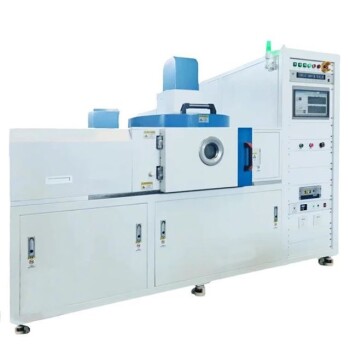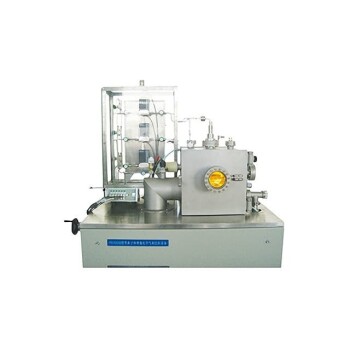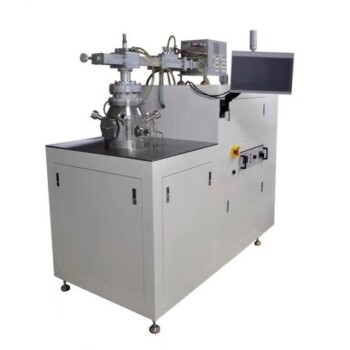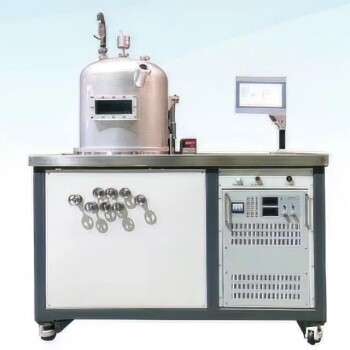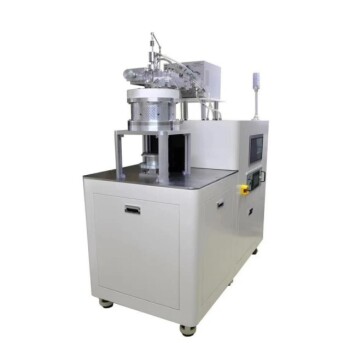At its core, Chemical Vapor Deposition (CVD) is an exceptionally versatile technique capable of depositing a vast range of materials. The process can create high-purity thin films of metals, semiconductors, and ceramics, as well as complex nanostructures, making it a foundational technology in advanced manufacturing.
The true power of CVD lies not just in the variety of materials it can deposit, but in its ability to control the material's fundamental structure—from amorphous films to perfect single crystals—by precisely managing the underlying chemical reactions.
The Three Primary Categories of CVD Materials
CVD's flexibility stems from its use of chemical precursors in a vapor state. If a material's components can be transported as a gas and induced to react on a surface, it can likely be deposited via CVD. This enables the creation of three main classes of materials.
Metals and Alloys
CVD is widely used to deposit pure metals and alloys, often for applications requiring high purity or performance under extreme conditions.
These films are crucial in microelectronics for creating conductive pathways and in aerospace for protective coatings. Common examples include tungsten (W), tantalum (Ta), rhenium (Re), and iridium (Ir).
Semiconductors
The modern electronics industry is built on the ability of CVD to deposit ultra-pure semiconductor films.
Silicon (Si) is the most prominent example, forming the basis of virtually all integrated circuits. The process also enables the creation of compound semiconductors and emerging materials like transition metal dichalcogenides (TMDCs) for next-generation devices.
Ceramics and Dielectrics
CVD excels at creating hard, durable, and electrically insulating ceramic films. These are often categorized by their chemical composition.
- Oxides: Materials like silicon dioxide (SiO₂), alumina (Al₂O₃), and hafnia (HfO₂) are used as high-quality electrical insulators in transistors and capacitors.
- Nitrides: Titanium nitride (TiN) and silicon nitride (Si₃N₄) provide hard, wear-resistant coatings for cutting tools and serve as diffusion barriers in microchips.
- Carbides: Extremely hard materials like silicon carbide (SiC) and tungsten carbide (WC) are deposited on tools and mechanical parts to dramatically increase their lifespan and durability.
Beyond Material Type: Controlling Structure
The true sophistication of CVD is its ability to control not just what material is deposited, but how its atoms are arranged. This structural control is critical for tuning a material's properties.
Amorphous Films
These materials lack a long-range crystalline structure, much like glass. This makes them ideal for applications requiring uniformity over large, non-flat surfaces, such as flexible displays or optical coatings.
Polycrystalline Films
These films consist of many small, randomly oriented crystalline grains. This structure offers a good balance of performance and manufacturability, making it the standard for applications like solar panels and many electronic device layers.
Advanced Nanostructures
CVD is a key method for synthesizing materials with unique, engineered geometries at the nanoscale.
Examples include one-dimensional nanowires and carbon nanotubes, which have exceptional electrical and mechanical properties. It is also used to create two-dimensional (2D) materials like graphene and to deposit diamond and diamond-like carbon (DLC) films, known for their extreme hardness.
Understanding the Trade-offs
While incredibly versatile, CVD is not a universal solution. Its capabilities are governed by fundamental chemical and physical constraints.
The Precursor Limitation
The single greatest constraint of CVD is the need for a suitable precursor chemical. A precursor must be volatile enough to be transported as a gas at a reasonable temperature but stable enough not to decompose prematurely. For some elements or compounds, finding a safe, effective, and affordable precursor is a significant challenge.
Process Condition Sensitivity
The quality of a CVD film is highly dependent on process parameters like temperature, pressure, and gas flow rates. The substrate material must also be able to withstand the deposition temperature, which can range from moderate to very high, limiting material combinations.
Rate vs. Quality
There is often a direct trade-off between the deposition rate (speed) and the structural quality of the film. Growing a highly ordered, low-defect single-crystal film is a much slower and more meticulous process than depositing a lower-quality amorphous or polycrystalline layer.
Matching the Material to Your Goal
Choosing the right CVD material is about defining your primary objective.
- If your primary focus is microelectronics manufacturing: You will rely on CVD for depositing silicon, silicon dioxide, and silicon nitride, which are the workhorses of CMOS devices.
- If your primary focus is mechanical performance and durability: You should look to hard coatings like titanium nitride, silicon carbide, or diamond-like carbon to protect tools and components.
- If your primary focus is advanced research and next-gen devices: You will be exploring CVD synthesis of graphene, TMDCs, and nanowires to leverage their novel electronic and physical properties.
Ultimately, CVD provides a powerful toolkit for engineering materials from the atom up, enabling technologies that would otherwise be impossible.
Summary Table:
| Material Category | Examples | Key Applications |
|---|---|---|
| Metals and Alloys | Tungsten (W), Tantalum (Ta) | Conductive pathways, protective coatings |
| Semiconductors | Silicon (Si), Transition Metal Dichalcogenides (TMDCs) | Integrated circuits, next-gen devices |
| Ceramics and Dielectrics | Silicon Dioxide (SiO₂), Titanium Nitride (TiN) | Electrical insulation, wear-resistant coatings |
| Advanced Nanostructures | Graphene, Carbon Nanotubes | High-performance electronics, mechanical parts |
Unlock the potential of Chemical Vapor Deposition for your laboratory with KINTEK's advanced solutions. Leveraging exceptional R&D and in-house manufacturing, we provide diverse labs with high-temperature furnace systems like Muffle, Tube, Rotary Furnaces, Vacuum & Atmosphere Furnaces, and CVD/PECVD Systems. Our strong deep customization capability ensures we can precisely meet your unique experimental needs, whether for microelectronics, mechanical durability, or cutting-edge research. Contact us today to discuss how our tailored CVD solutions can enhance your material deposition processes and drive innovation in your projects!
Related Products
- RF PECVD System Radio Frequency Plasma Enhanced Chemical Vapor Deposition
- Slide PECVD Tube Furnace with Liquid Gasifier PECVD Machine
- Inclined Rotary Plasma Enhanced Chemical Deposition PECVD Tube Furnace Machine
- Custom Made Versatile CVD Tube Furnace Chemical Vapor Deposition CVD Equipment Machine
- Multi Heating Zones CVD Tube Furnace Machine for Chemical Vapor Deposition Equipment
People Also Ask
- What role does PECVD play in optical coatings? Essential for Low-Temp, High-Precision Film Deposition
- What is the second benefit of deposition within a discharge in PECVD? Enhance Film Quality with Ion Bombardment
- How does the PECVD process work? Enable Low-Temperature, High-Quality Thin Film Deposition
- How does plasma enhanced CVD work? Achieve Low-Temperature, High-Quality Thin Film Deposition
- What is plasma enhanced chemical vapor deposition application? Enable High-Performance Thin Films at Lower Temperatures
